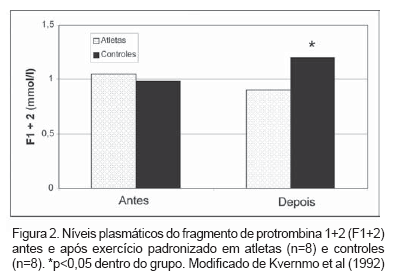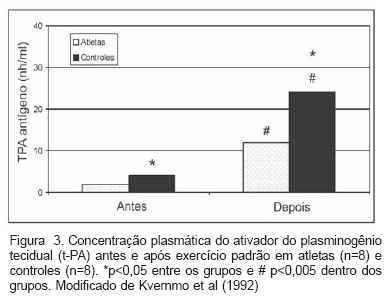Post-exercise hypercoagulability state has been well demonstrated as increases in coagulation activity are often reported after many exercise protocols. One of the most consistent effects of acute exercise is an increase in coagulation activity reflected by the FVIII activity of thrombin generation markers (TAT and F1+2). This increase is intensity-dependent. In relation to chronic effects, resting coagulant activity does not change with training. However, post-exercise FVIII levels have been reported to be greater in sedentary individuals than in trained subjects and resting levels of post-infarction patients decrease with training. Hyperfibrinolysis related to exercise has also been reported and, similar to coagulation activity, may be intensity-dependent. Increases in t-PA, u-PA, and plasminogen levels and decreases in PAI-1 after exercise have been reported. Resting t-PA levels of non-trained individuals are higher than in active subjects or athletes. In addition, post-infarction patients have a significant decrease of PAI-1 levels after rehabilitation. More controversial results are related to the chronic effects of t-PA. While some studies have shown higher levels of t-PA in trained individuals compared with non-trained subjects, others have not shown this. More consistent results related to the effects of exercise on the hemostatic process, including coagulation and fibrinolytic activities, remain necessary. Chronic effects of exercise need to be studied further, both in relation to the health benefits and the influence on the performance of athletes.
Coagulation; fibrinolysis; hemostasy; exercise; training




